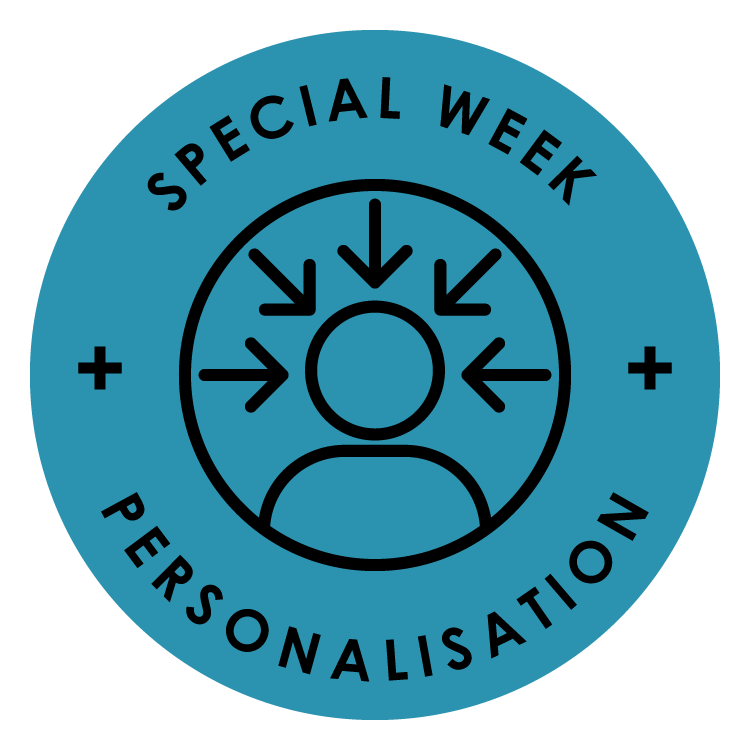Your Brand Needs a Behaviour Detective
A behavioural approach to personalisation in marketing can be just what a brand needs to properly engage customers. The big box department store chain Target wanted to enhance their personalised marketing strategy. The brand gave its customers individual ID numbers, which were used to store their information and track buying behaviour. They tracked those who […]
Topics
What to Read Next
- Martechvibe Launches the Marquee Awards to Celebrate Breakthrough Digital Campaigns
- Top Marketers 4X More Likely to Use AI, Consolidate Tech
- Roku and iSpot Bring Outcome-Based Optimisation to Streaming
- PMG Expands Influencer Marketing Capabilities with Acquisition of Digital Voices
- PayPal Ads Launches Transaction Graph Insights & Measurement

A behavioural approach to personalisation in marketing can be just what a brand needs to properly engage customers.

The big box department store chain Target wanted to enhance their personalised marketing strategy. The brand gave its customers individual ID numbers, which were used to store their information and track buying behaviour. They tracked those who had baby registries with the store, and the analysts identified a “pregnancy prediction” score. It allows them to infer which customers were in the early expectant stage through purchasing patterns. Target then sent personalised, special deals to specific customers based on their purchase interests. It was a game-changing strategy.
Similarly, Timberland struck a million-dollar idea. Wanting to drive the millennials to visit its physical stores, it chose to leverage behavioural-based data. Did the particular customer recently visit a brick-and-mortar store? How close were they to their store? What made them hesitate? With the right set of tools, data and subsequent advertising campaign, Timberland targeted the “mindset to purchase footwear” customers and increased their in-store visits by 6.2 per cent.
Did they get it right?
Customers want businesses to know what they really want, and personalisation is at the heart of it. No amount of general messaging, mass customisation, or other dull marketing techniques can work. A behavioural approach to personalisation in marketing is the right way to engage customers.
A few years ago, Harvard Business Review found that even though customers wish to keep their information secret, they value personalisation and meaningful marketing experiences. An insights-based approach is a strong strategy to make marketing more personalised, accurate, and more focused. Behaviour-based marketing through buying intent data can accurately identify customer requirements, act on elusive intent-to-buy signals, and allow lead conversion to be seamless.
Quality Over Quantity
Many marketers hesitate to leverage the behavioural approach as fewer leads are received from a campaign. Instead of receiving over 100 leads, the team might receive only 30. Experts state that what might look like a problem is not. The critical differentiator becomes quality. And it all comes down to the best practice approach towards behavioural-based marketing. The active market can be identified by leveraging tiered strategies, using a structured approach to more profound research and mapping of behaviours.
With proper timing, context and relevance, the best behavioural-based marketing to fulfil personalisation needs can be achieved.
Behavioural Targeting
Netflix is the king of personalisation using behavioural targeting on recommendation engines. Amazon masters targeted and personalised email campaigns. eCommerce giant Flipkart uses e-mails to re-target and re-engage customers and drive them to enter the conversion funnel.
Apart from boosting engagement, behavioural targeting also helps with personalisation and businesses’ scale dramatically. From Amazon and Netflix to SMBs, companies are starting to use this strategy to increase their conversion rate. Some brands use data management platforms to harvest behavioural data and store them in different segments for personalisation based on behavioural insights. Soon after, personalised campaigns are created. However, the work is not done here, as setting up campaigns is only the beginning.
Measuring and validating the performance of the behavioural approach for personalisation marketing is equally, if not more, crucial. Experts suggest using qualitative tools such as heatmaps, scrollmaps, and visitor behaviour analysis to gain insights and predict customer decisions.
Meanwhile, have you given a thought to website personalisation with behavioural targeting? Treating each website visitor as an individual entity and attempting to engage with them in a more personalised and complex interaction is also necessary to satisfy customer demands. Real-time interpretation of these visitors using behavioural targeting can allow brands to create a more personalised relationship with customers and increase loyalty.
Some marketers lean towards predictive personalisation driven by Artificial Intelligence (AI), Machine Learning (ML) and algorithms for behaviour-based marketing.
How AI swoops in
Content is core, but useless without context. Mimicking the problem-solving abilities and decision-making capabilities of the human mind is an AI’s job.
AI insights on behavioural and real-time customer data can create relevant brand communication with their customers. Factors such as location intelligence, frequent purchase data, demographics, and communication medium preferences are critical data assets that can provide hyper contextual, behavioural content. It also allows brands to become proactive while communicating with target customers.
Collecting, analysing, and taking action on the behavioural data for personalised campaigns can be strengthened by intelligent technology. Sometimes, marketers assume behavioural targeting is limited to third-party data, but AI can widen the pool and help optimise the marketing strategy.
Through AI and big data, product personalisation software can maximise the use of detailed user logs. Additionally, AI-based systems can tap into data volumes to detect anomalies affecting behavioural pattern analyses.
Many marketers struggle with a holistic and clear understanding of their customers by hoarding data and available technology. With the onset of crumbling cookies, the only way to gain a holistic understanding of customers is to gather behavioural information about customers from trusted, protected and ethically sourced portals and become creative with technology.
Even IoT devices can help monitor and login user behaviour inputs in real-time. It can send valuable data assets to the cloud for further processing. The company then analyses the data asset and uses the insights to enhance personalised customer strategies.
With over 80 per cent of the global consumer base demanding personalisation, the behavioural-based approach in personalisation marketing is experiencing its swan song stage, and it can disrupt personalisation marketing sooner or later.
If you liked reading this, you might like our other stories
Banking On Hyper-Personalisation
Quicktake: Contextual Advertising









































































































